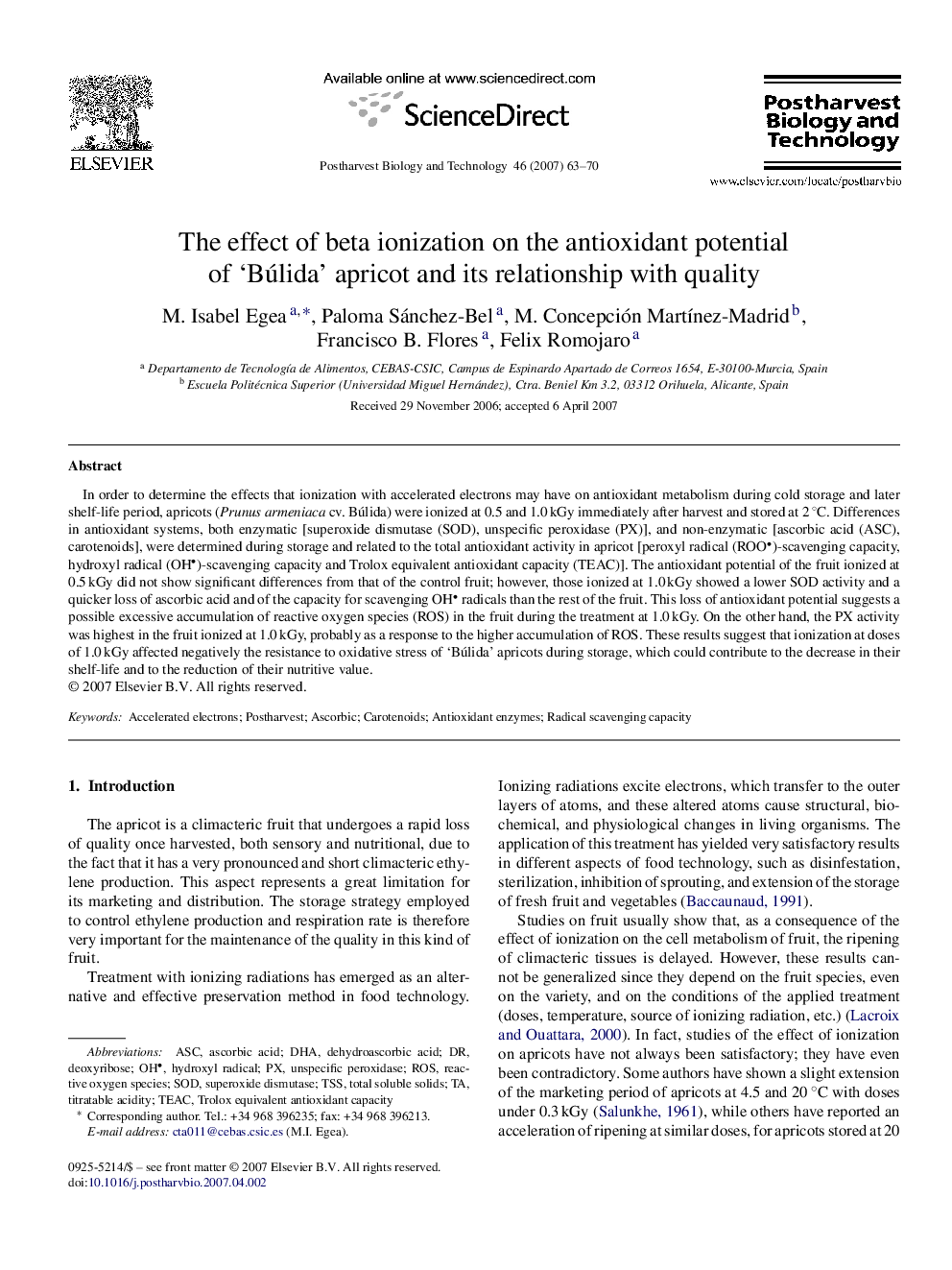| Article ID | Journal | Published Year | Pages | File Type |
|---|---|---|---|---|
| 4519841 | Postharvest Biology and Technology | 2007 | 8 Pages |
In order to determine the effects that ionization with accelerated electrons may have on antioxidant metabolism during cold storage and later shelf-life period, apricots (Prunus armeniaca cv. Búlida) were ionized at 0.5 and 1.0 kGy immediately after harvest and stored at 2 °C. Differences in antioxidant systems, both enzymatic [superoxide dismutase (SOD), unspecific peroxidase (PX)], and non-enzymatic [ascorbic acid (ASC), carotenoids], were determined during storage and related to the total antioxidant activity in apricot [peroxyl radical (ROO)-scavenging capacity, hydroxyl radical (OH)-scavenging capacity and Trolox equivalent antioxidant capacity (TEAC)]. The antioxidant potential of the fruit ionized at 0.5 kGy did not show significant differences from that of the control fruit; however, those ionized at 1.0 kGy showed a lower SOD activity and a quicker loss of ascorbic acid and of the capacity for scavenging OH radicals than the rest of the fruit. This loss of antioxidant potential suggests a possible excessive accumulation of reactive oxygen species (ROS) in the fruit during the treatment at 1.0 kGy. On the other hand, the PX activity was highest in the fruit ionized at 1.0 kGy, probably as a response to the higher accumulation of ROS. These results suggest that ionization at doses of 1.0 kGy affected negatively the resistance to oxidative stress of ‘Búlida’ apricots during storage, which could contribute to the decrease in their shelf-life and to the reduction of their nutritive value.
